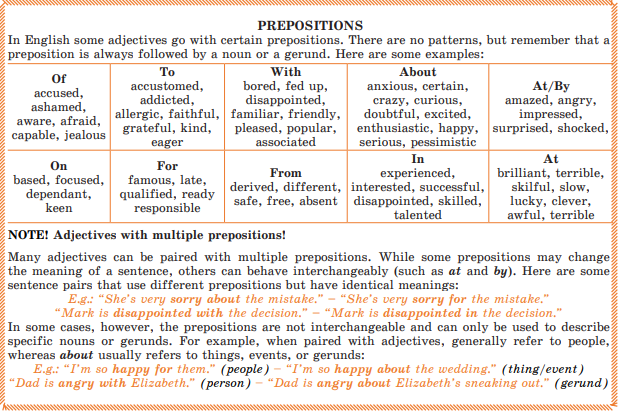Read the quotes and comment on them.
“The purpose of art is washing the dust of daily life off our souls.” “Art is not just about the canvas or the gallery. It’s all around us. Art is what we’re doing when we do our best work.”
1. Explain the difference between these art words. Which type of art do they refer to?
fine art – decorative arts canvas – collage mural – marble bust watercolour – oil painting still life – mosaic | appeal – depict cinematography – photography fiction – feature masterpiece – state-of-the-art reproduction – collection |
2. Complete these sentences with the given art idioms. Give their Ukrainian equivalents.
1) Beauty is in the eye of the beholder 2) A picture is worth a thousand words 3) Think outside the box 4) Up-and-coming 5) God-gifted talent 6) To marvel at works 7) A matter of taste 8) Culture vulture 9) Highbrow 10) Lowbrow | a) Every year, thousands of tourists come _____ of the brilliant architect. b) Tim: “Have you seen pictures of the Maasai tribe in Tanzania who wear big plates in their lips? I don’t understand why they do it.” Ann: “Well, _____. In their tribe it’s very attractive.” c) The movie’s humour is clearly meant for a _____ audience. d) Some people like jazz and some people don’t. It’s all just _____. e) If you’re a _____, New York has everything you could want – opera, theatre, museums, and more. f) People who _____ are often labelled as innovators. g) They only attend _____ events such as the ballet or the opera. h) A good presentation should contain more graphics and less text, since _____. i) Most of the time we don’t see our _____ because we think that there is nothing extraordinary about us. j) Willow Smith is an _____ musician. He’ll soon be famous. |
3. Complete the sentences with the most suitable words.
1) During the dress performance/repetition/rehearsal he was relaxed, but he was very nervous on the first night.
2) They have just released a collection of Shakespeare’s works/workers/workings.
3) The rock group “Glass Weasel” has released a limited edition/collection/publishing of their new album which contains a CD-ROM of their show.
4) His book received excellent reviews/reports/revisions in the newspapers.
5) There is an exhibition/show/display of Monet’s work at the Tate.
6) Ernest Hemingway was one of the twentieth century’s most famous playwrights/ novelist screenwriters, who used to write standing.
7) The French impressions/impressionists/impressionisms of the nineteenth century had a profound impact on the world of art.
8) The actor had six curtain calls/falls/shouts his after marvellous performance.
9) Meryl Streep gave an excellent act/performance/character in the film.
10) She was proud to be singled/selected/separated out for special praise for her performance.
4. How do you usually put yourself at ease after a difficult day/week? Do you know about art therapy? What do you think it is? Read the text and check your ideas.
- Johann Wolfgang von Goethe said: “A man should hear a little music, read a little poetry, and see a fine picture every day of his life, in order that worldly cares may not obliterate the sense of the beautiful which God has implanted in the human soul.” Art is a universal language that allows us to express ourselves. Music is the food of the spirit and the soul. Studying music helps develop critical thinking, self-discipline, as well as math and reading skills. Reading literature in novels, poetry, short stories, and narrations of the world’s greatest writers and thinkers enriches us by exposing us to interesting, fascinating experiences; giving an insight and understanding into human nature; helping us understand ourselves; while at the same time it transports us to different worlds by stimulating our imagination and creativity.
- II. What is specific about art therapy is that visual images, not words, are used as a way of communication. Often, people experiencing psychological traumas or undergoing life challenges have difficulty expressing themselves verbally. While the conscious mind might avoid facing painful or disturbing experience or we don’t have words to express our feelings, visual imaging can make us aware of the situation and help in resolving it. However, expressive arts therapy doesn’t have to be used only as a treatment, but also as a mode of self-discovery. Your art can tell you many new things about yourself that you might have no idea about.
- IІІ. Enjoying art is relaxing and therapeutic. The goal is not necessarily to create a masterpiece but to express yourself using art as a medium. Art therapy can help improve various mental and physical symptoms including, but not limited to, reducing pain, anxiety, and tension. It can be beneficial to those who have mental disorders or light emotional abuse, cancer, post traumatic stress, and people who are bipolar. Art therapy can also help people with their social skills, especially those who are withdrawn, shy, or have difficulties socializing with others.
- ІV. An art therapist can help you a lot with self-understanding and give you guidance in improving yourself. Although, if you don’t have the opportunity to work with a specialist, there are many things you can do on your own. Depending on what you have inside, express different feelings depicting different things:
• Tired – draw flowers • Angry – draw lines • Troubled – sculpt • Bored – fill paper with different colours • Depressed – draw a rainbow • Tense – draw patterns • Frustrated – draw roads | • Spiritless – draw landscapes • Confused – draw a self-portrait • Miserable – make a collage • Anxious – draw making dots • Doubtful – draw waves and circles • Overpowered – draw spirals • Unfocused – draw nets and targets |
5. Match these questions to the paragraphs above and answer them.
1) What is the definition of art? 2) What are the influences of arts? 3) What is the purpose of art? 4) What is art therapy? 5) What are the side effects? | 6) How can it help? 7) Who is art therapy for? 8) How do people practise the therapy? 9) How does it work? 10) How do you feel now? What is advised to draw in this state? |
6. Look at the last passage of the text and the list of emotions and feelings there. Tell whether they are negative or positive? Fill them into the table accordingly.
| Positive | Negative |
7. Recall any situation and the feeling you had about it. Follow the advice of the therapist, draw in an appropriate way. Does it help you control or overcome your emotion?
8. Name the speakers who do arts themselves? Listen to the recording again and match the speakers to the questions.
_____Speaker 1 _____Speaker 2 _____Speaker 3 _____Speaker 4 _____Speaker 5 | a) _____Who is a very scrupulous observer of artworks? b) _____Who is open for a bigger variety of his/her particular art choice? c) _____Who is not very original in his/her preferences, as this art is common? d) _____Who is always ready to create an artwork? e) _____Who didn’t manage to become skilled in his/her favourite art type? |

9. Choose the correct prepositions or infinitive forms to complete the sentences.
1) He’s certain in/about/to get the job.
2) I’ve always been hopeless at/in/to football.
3) Is this film suitable about/for/to children?
4) It was stupid to/with/of me not to bring an umbrella.
5) She was excited to/in/about the idea.
6) Italy is associated with/for/about the Coliseum.
7) Were you pleased to/of/with the results?
8) They are proud to/for/of her achievements.
9) I was made aware of/with/to the news this morning.
10) They are opposed to/in/about the war.
10. Complete each group of collocations with the correct prepositions.
1) relevant _____________ the argument/our discussion/the problem
2) responsible _____________ the equipment/making a mess/France and Italy
3) sensitive _____________ that detergent/any movement/criticism
4) suspicious _____________ strangers/everything he says/crowded places
5) accustomed _____________ peace and quiet/getting up late/so much noise
6) afraid _____________ the dark/making a mistake/saying something silly
7) ashamed _____________ yourself/what I’ve done/doing a thing like that
8) capable _____________ high speeds/working fast/anything!
9) dependent _____________ imports/how he feels/what happens
10) famous _____________ its museums/making pottery/his paintings
11) full _____________ pride/fun/tourists
12) jealous _____________ what other people do/her rich friends/his English!
13) typical _____________ the region/the way he acts/people who …
14) short _____________ money/breath/time
11. Choose a picture and name the type of art imaged. Tell your classmates how itmakes you feel. Have you ever been involved in any of these arts?

12. You received an email from your penfriend. Read the extract and write your reply to him in about 150-200 words. |  |
Матеріал до підручника Англійська мова 11 клас Нерсисян, Піроженко 2019
